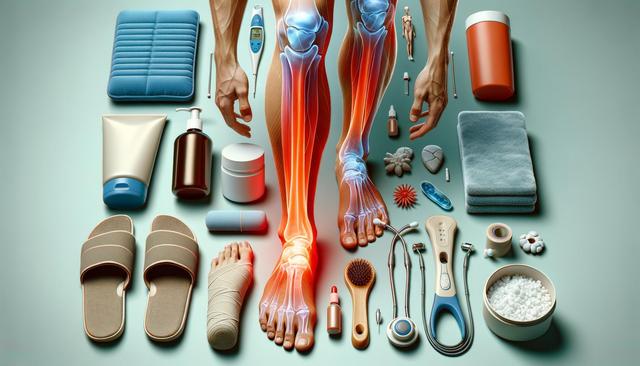Understanding Common Causes of Leg Pain and Swelling
Leg pain and swelling can stem from a wide range of conditions, making it important to identify the underlying issue before pursuing treatment. Some of the most common causes include fluid retention, venous insufficiency, injury, and inflammation-related conditions such as arthritis. Lifestyle factors like prolonged standing, excess salt intake, or sedentary habits can also contribute significantly to swelling. Understanding the Causes of Leg Swelling and Treatment options requires evaluating both medical and lifestyle factors.
In many cases, fluid retention is a primary culprit. This condition, often referred to as edema, can affect both legs and feet and may result in discomfort, tight skin, and visible swelling. Recognizing the signs early and knowing How to Get Rid of Fluid in Legs and Feet can prevent further complications. In more serious situations, underlying conditions like heart, kidney, or liver disease may need to be ruled out.
When to Seek Medical Help for Swelling
Persistent or severe swelling in the lower extremities should not be ignored. While mild ankle puffiness might be attributed to long days on your feet or heat, swelling that is accompanied by pain, discoloration, or shortness of breath can indicate a more serious issue. If you’re unsure What Kind of Doctor to See for Swollen Feet and Ankles, a general practitioner is a good starting point. They can refer you to specialists such as vascular doctors, cardiologists, or nephrologists depending on the suspected cause.
Signs that warrant immediate evaluation include:
- Sudden or severe swelling in one leg
- Warmth or redness around the swollen area
- Shortness of breath or chest pain
- Swelling that does not improve with rest or elevation
Timely medical intervention can help identify and treat underlying conditions before they progress. In some cases, diagnostic imaging or blood tests may be required to pinpoint the exact cause of leg and foot swelling.
Conservative Home-Based Treatments
For many individuals, conservative approaches can effectively manage mild to moderate swelling and discomfort. Simple changes in daily habits can significantly improve symptoms and prevent recurrence. When considering Leg Foot Swelling Treatment options at home, the following strategies often prove useful:
- Elevating legs above heart level for 15–30 minutes several times a day
- Wearing compression stockings to improve circulation
- Reducing salt intake, which can help minimize fluid retention
- Staying active with regular, low-impact exercises like walking or swimming
- Hydrating adequately to support kidney function
These methods are generally safe and can be implemented without medical supervision, though it’s important to monitor progress and adjust strategies accordingly. If symptoms persist, professional guidance becomes necessary.
Medical and Pharmaceutical Interventions
When lifestyle changes are not sufficient, medical treatments may be required. Physicians may recommend medications such as diuretics to help the body eliminate excess fluid. These are especially helpful in cases where swelling is caused by systemic conditions like heart or liver disease. Properly guided Foot and Leg Swelling Treatment may also include anti-inflammatory drugs or therapies targeting underlying vascular issues.
In more complex scenarios, treatment may involve:
- Physical therapy to improve circulation and mobility
- Surgical interventions for varicose veins or blocked arteries
- Management of chronic illnesses such as diabetes or hypertension
It’s crucial that these treatments are monitored by healthcare providers to ensure safety and effectiveness. Patients should also be educated on potential side effects and the importance of adhering to prescribed therapies.
Long-Term Management and Prevention
Preventing recurring leg pain and swelling involves ongoing attention to health habits and any chronic conditions. Regular check-ups, maintaining a healthy weight, and managing conditions like diabetes or high blood pressure can significantly reduce the risk of leg swelling. Additionally, being proactive about Leg Foot Swelling Treatment can lead to better outcomes and improved quality of life.
Key preventive steps include:
- Maintaining an active lifestyle with regular movement throughout the day
- Wearing proper footwear that supports circulation
- Staying hydrated and eating a balanced diet
- Avoiding long periods of immobility, especially during travel
By integrating these habits into daily life, individuals can reduce the likelihood of developing chronic swelling and discomfort in their legs and feet.




Leave a Reply